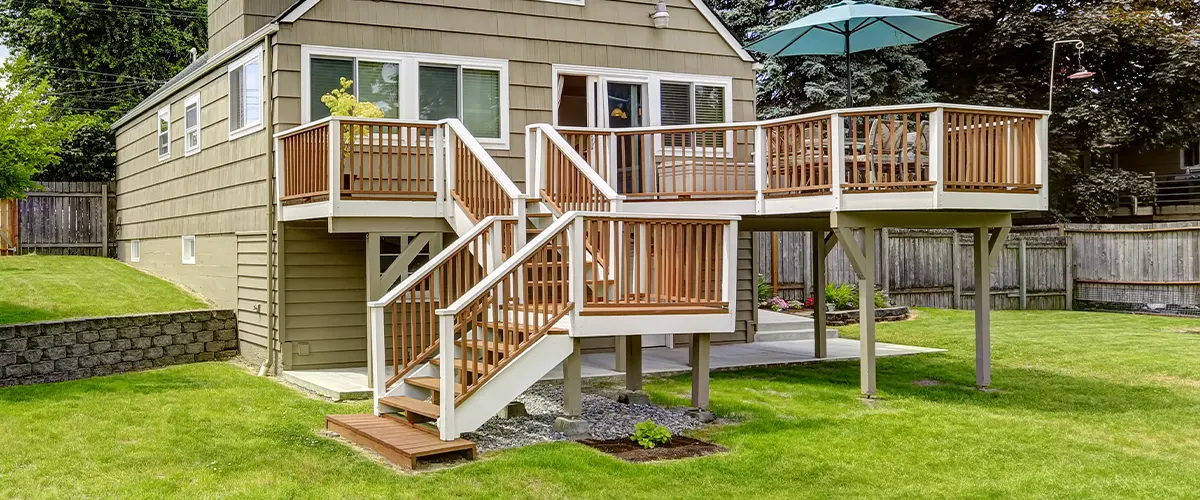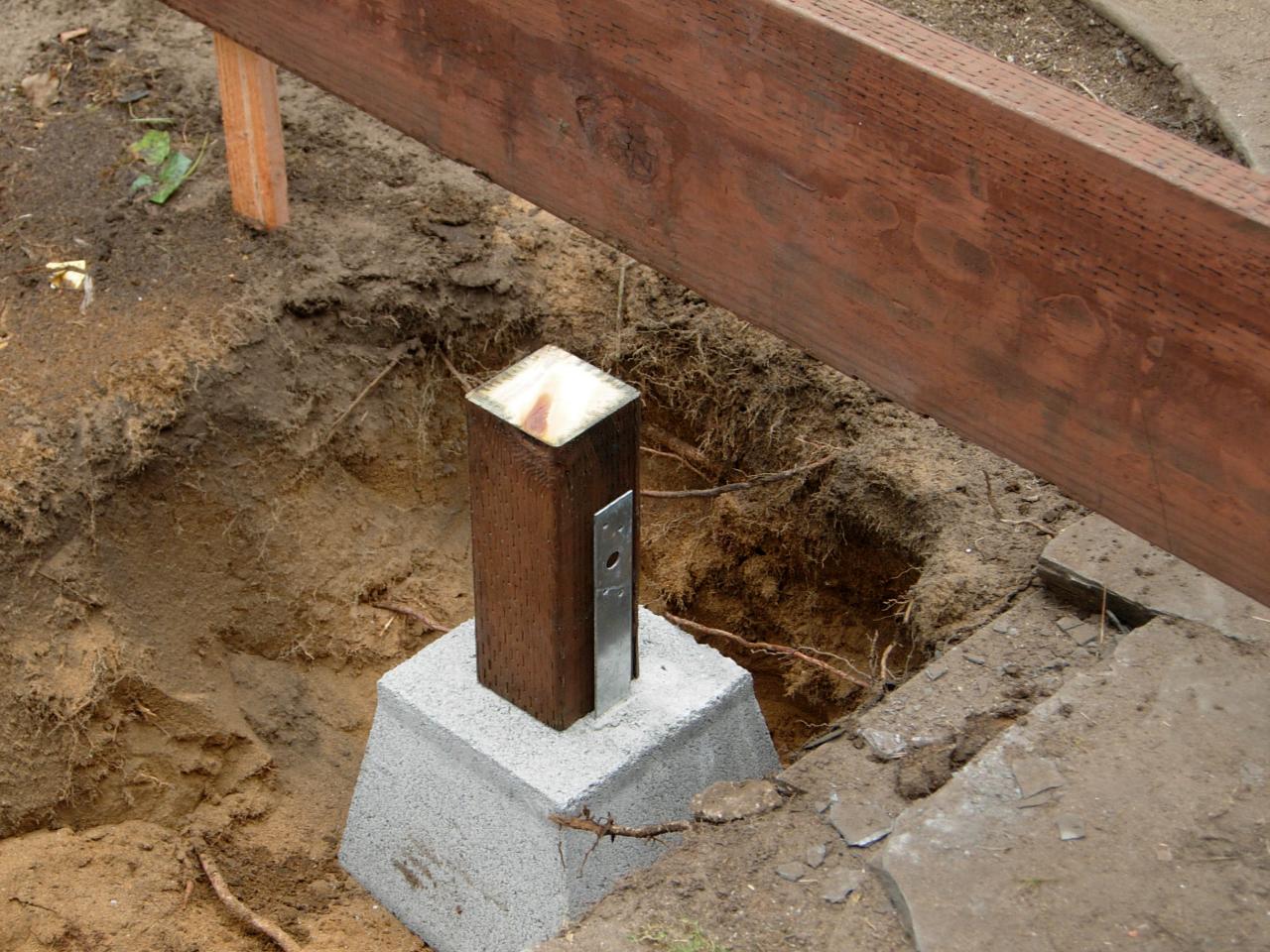Deck Footings 101: Browsing the Basics for a Stable and Resilient Deck
Make Sure Security and Durability With Appropriately Set Up Deck Footings
Deck footings might not be the most glamorous aspect of deck building and construction, however they play a vital role in guaranteeing security and longevity. In this conversation, we will check out the importance of proper deck footings, factors to take into consideration throughout installation, different types of footings readily available, detailed installment guide, and maintenance pointers for ensuring lasting footings.

Significance of Correct Deck Footings
Why are effectively mounted deck grounds crucial for the security and durability of your deck? Deck footings are the structure on which the deck rests, transferring the load from the deck to the ground.
To start with, correctly installed deck footings disperse the weight of the deck evenly, stopping any kind of uneven settling or sinking. This is especially important in areas with unpredictable dirt, as it aids to minimize the threat of the deck falling down or shifting. In addition, well-installed footings ensure that the deck continues to be level, protecting against any structural damages that can occur when a deck comes to be irregular.
Second of all, correctly mounted grounds provide a strong support for the deck, stopping extreme motion and persuade. This assists to preserve the architectural honesty of the deck, decreasing the threat of injuries or mishaps. It likewise minimizes the wear and tear on the deck, permitting it to hold up against the elements and normal usage for a longer time period.
Factors to Think About for Deck Ground Installation
When installing deck grounds, there are several crucial aspects to take into consideration for appropriate setup. Various dirt kinds have different load-bearing capabilities, so it is crucial to conduct a soil test to ensure the footings can support the weight of the deck and its owners. By taking right into account these elements, you can ensure the proper installation of deck footings and delight in a steady and resilient deck.
Sorts Of Deck Footings to Select From
There are a number of various kinds of deck grounds available for you to pick from. Each type has its very own advantages and negative aspects, so it's vital to consider your specific demands and the conditions of your deck before deciding.
One typical type of deck footing is the concrete footing. This involves digging holes in the ground and pouring concrete into them to create a strong foundation. Concrete grounds are durable and supply outstanding stability, making them suitable for decks in locations with challenging soil problems or high wind loads.
One more alternative is the helical pier ground, which contains a steel shaft with helical plates that are screwed into the ground. These footings are fast to mount and can be made use of in different dirt types, including sandy or clay soils. They are likewise flexible, allowing for very easy leveling of the deck.
Sonotube footings are one more prominent selection. These footings are produced by positioning a cardboard tube in an opening and filling it with concrete. Sonotube footings are fairly easy to set up and offer appropriate stability for smaller decks or in locations with less requiring dirt conditions.

When choosing the type of deck view website ground, it's crucial to take into consideration aspects such as soil conditions, deck size and weight, local building ordinance, and individual choices. By selecting Full Report the appropriate ground type, you can guarantee the stability and long life of your deck.
Step-by-Step Overview for Putting Up Deck Footings

Identify the location: Start by noting the exact setting of each ground making use of stakes and string (Deck Footings). Take into account any type of neighborhood building regulations or regulations relating to trouble ranges
Dig the holes: Utilize a post hole miner or an auger to dig the holes for the footings. Usually, a depth of at least 36 inches is recommended for security.
Level the holes: Make certain that all-time lows of the openings are degree (Deck Footings). This can be attained by utilizing a level or a straight board across the top of the openings
Include crushed rock: Place a layer of crushed rock at the bottom of each opening to boost water drainage and prevent the footing from sinking right into the soil gradually.
Place the footing kinds: Place the ground creates right into the openings, guaranteeing they are focused and level. Usage risks to protect them in position.
Mix and put concrete: Adhere to the directions on the concrete mix bag to prepare the concrete. Put the concrete into the footing forms, filling them completely.
Smooth the surface: Utilize a trowel to smooth the surface area of the concrete and eliminate any air pockets. Permit the concrete to treat according to the manufacturer's guidelines.
Maintenance Tips for Resilient Deck Footings
Proper upkeep is vital for ensuring the durability and stability of deck footings. By on a regular basis evaluating and preserving your deck footings, you can avoid damage and potential safety hazards.
Routine cleaning is likewise important for preserving deck footings. Debris, vegetation, and dust can collect around the grounds, which can cause moisture accumulation and decay. Cleansing the grounds consistently, using a pressure or a brush washer, can assist avoid these concerns and prolong the life-span of your deck.
In addition pop over to this site to cleaning, it is essential to keep the area around the grounds free from any type of blockages. Avoid piling things against the footings or allowing plants to expand as well close to them. These blockages can catch dampness and trigger the footings to weaken in time.
Lastly, normal resealing of the footings is recommended to secure them from moisture and various other environmental factors. Using a water-proof sealant can assist protect against water damages and expand the life-span of the grounds.
Final Thought
To conclude, appropriate installation of deck grounds is critical for making sure stability and longevity of your deck. Variables such as dirt type, load capability, and neighborhood building regulations need to be thought about when choosing the appropriate sort of deck footings. Following a detailed overview for installation and routine maintenance will help to make certain the grounds stay long-lasting and sturdy.
In this discussion, we will discover the relevance of correct deck footings, variables to think about throughout setup, different types of grounds readily available, step-by-step installation guide, and maintenance suggestions for making sure durable footings. Deck grounds are the foundation on which the deck rests, transferring the tons from the deck to the ground.One typical type of deck ground is the concrete footing. Put the ground kinds: Place the footing creates into the holes, ensuring they are centered and degree.In final thought, correct installation of deck footings is important for guaranteeing security and durability of your deck.